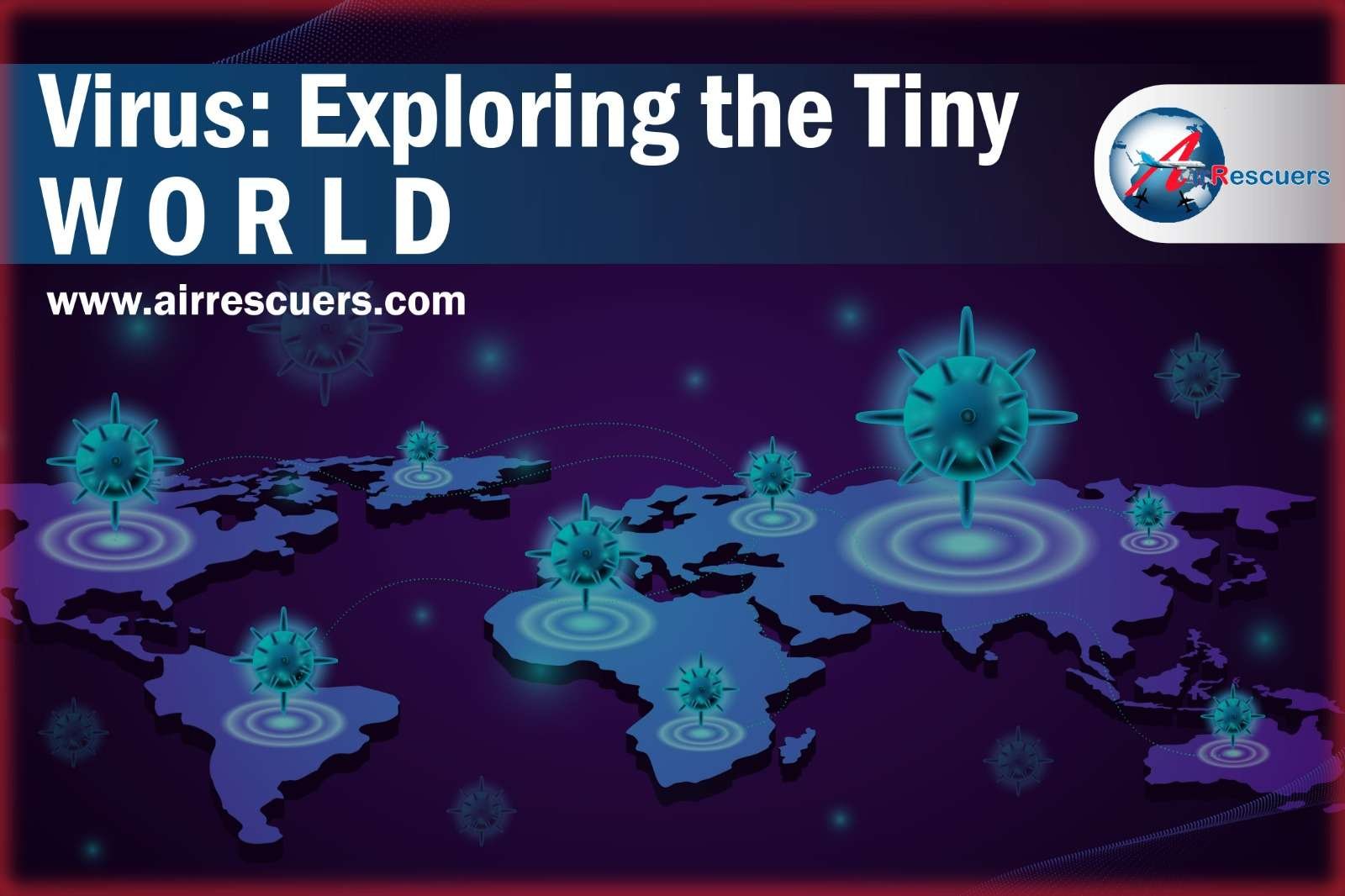In the big world of biology, there’s something super tiny that makes a big impact – viruses. In this blog, we’re taking a trip to uncover the secrets of these small, infectious things that live in the middle ground between living and nonliving. We’ll learn about their genes, how they affect human health, and why they’re so important to life.

Come with us as we explore the fascinating world of viruses, checking out their structures, the many types out there, and the dance they do inside living cells. We’ll show you that viruses are not just troublemakers causing diseases; they also play a crucial role in keeping nature in balance.
Looking at health, we’ll see how viruses have affected humans over time – from big pandemics that changed societies to new viruses causing problems today. We’ll also uncover the tricks and strategies people use to fight these tiny enemies and keep everyone healthy.
This blog is here to make viruses less mysterious. We’ll share insights into their biology, their role in the big picture of life, and the hard work done to stop them from causing trouble. Get ready for an exciting journey into the hidden world of viruses, where science meets curiosity, and we uncover the secrets of the super tiny!
What is Virus?
A virus is a microscopic infectious agent that can replicate only inside the living cells of an organism. It can infect various forms of life, including animals, plants, fungi, bacteria, and archaea. Viruses consist of genetic material, either DNA or RNA, surrounded by a protein coat called a capsid. They lack the cellular machinery for metabolism and reproduction, relying on the host cell’s machinery to replicate and produce new virus particles. Viruses can cause a range of diseases in their hosts, from mild to severe, and play a significant role in various aspects of biology and medicine.
Types of Viruses
Viruses can be broadly classified into two main types based on the host they infect:
- Animal Viruses:
– Subcategories include human viruses and those affecting other animals.
– Examples include influenza virus, HIV (Human Immunodeficiency Virus), and herpes simplex virus.
- Plant Viruses:
– Infect plants and can have significant impacts on agriculture.
– Examples include tobacco mosaic virus and potato virus Y.
In addition to the host-based classification, viruses can also be categorized based on their genetic material:
- DNA Viruses:
– Contain DNA as their genetic material.
– Examples include herpesviruses and adenoviruses.
- RNA Viruses:
– Contain RNA as their genetic material.
– Divided into positive-sense RNA viruses (e.g., common cold viruses) and negative-sense RNA viruses (e.g., influenza viruses).
- Retroviruses:
– Specialized RNA viruses that use reverse transcription to convert their RNA genome into DNA.
– HIV is a notable example.
- Bacteriophages:
– Viruses that infect bacteria.
– Play a crucial role in controlling bacterial populations.
These classifications highlight the diverse nature of viruses, each adapted to exploit specific hosts and environments for their replication.
Impact of Viruses
The impact of viruses on health can vary widely, ranging from mild illnesses to severe, life-threatening conditions. Here are key points regarding the impact of viruses on human health:
- Disease Spectrum:
– Viruses cause a spectrum of diseases, including the common cold, influenza, gastroenteritis, and more severe conditions like COVID-19, HIV/AIDS, and viral hepatitis.
- Respiratory Infections:
– Many viruses, such as influenza viruses and respiratory syncytial virus (RSV), target the respiratory system, leading to symptoms like coughing, sneezing, and difficulty breathing.
- Pandemics:
– Certain viruses have the potential to cause global pandemics, affecting large populations and posing significant public health challenges. Examples include the 1918 influenza pandemic and the more recent COVID-19 pandemic.
- Impact on Vulnerable Populations:
– Viral infections often have a more severe impact on vulnerable populations, including infants, elderly individuals, and those with compromised immune systems.
- Chronic Infections:
– Some viruses can establish chronic infections, leading to long-term health issues. For example, chronic hepatitis B or C infections can result in liver damage and an increased risk of liver cancer.
- Vaccines:
– Vaccines play a crucial role in preventing and controlling viral diseases. Vaccination campaigns have been successful in reducing the incidence of diseases such as polio, measles, and influenza.
- Global Health Challenges:
– Emerging viruses and the potential for new infectious diseases pose ongoing challenges to global health. Surveillance, rapid response mechanisms, and international cooperation are essential for addressing these threats.
- Long-Term Consequences:
– Some viral infections can lead to long-term consequences, known as sequelae. For instance, certain viruses may cause chronic fatigue, neurological issues, or autoimmune disorders even after the acute phase of the infection has resolved.
Understanding the biology of viruses, developing effective treatments and vaccines, and implementing public health measures are critical components of managing and mitigating the impact of viral infections on human health.
Prevention and Control
- Vaccination:
– Ensure timely and complete vaccinations to protect against preventable viral infections.
- Hygiene Practices:
– Practice regular handwashing and respiratory hygiene to prevent the spread of viruses.
- Vector Control:
– Implement measures to control vectors, especially in areas where vector-borne diseases are prevalent.
- Safe Food Handling:
– Adhere to safe food handling and cooking practices to prevent foodborne viral infections.
- Quarantine and Isolation:
– Promptly isolate infected individuals and quarantine those exposed to prevent further transmission.
- Public Health Education:
– Conduct awareness campaigns to educate the public about virus transmission and preventive measures.
- Surveillance and Early Detection:
– Establish robust surveillance systems for early detection and monitoring of viral infections.
- Global Cooperation:
– Foster international collaboration and information sharing to address global health threats effectively.
- Personal Protective Equipment (PPE):
– Use appropriate PPE in healthcare settings to protect healthcare workers and prevent nosocomial transmission.
- Antiviral Medications:
– Develop and utilize antiviral medications for the treatment and management of specific viral infections.
- Environmental Measures:
– Regularly disinfect surfaces and ensure proper ventilation to reduce the risk of viral transmission.
- Community Engagement:
– Involve communities in health promotion, encouraging adherence to preventive measures through clear communication.
Combining these measures creates a comprehensive approach to prevent and control the impact of viruses on health.
Conclusion
In conclusion, the prevention and control of viruses on health require a multifaceted and collaborative approach. From individual practices like vaccination and proper hygiene to global initiatives such as surveillance and international cooperation, each measure plays a crucial role in safeguarding public health. As viruses continue to pose challenges, ongoing research, education, and community engagement remain pivotal in mitigating the impact of viral infections. By implementing these strategies collectively, we can build resilient health systems, respond effectively to emerging threats, and work towards a healthier, more secure global community.

